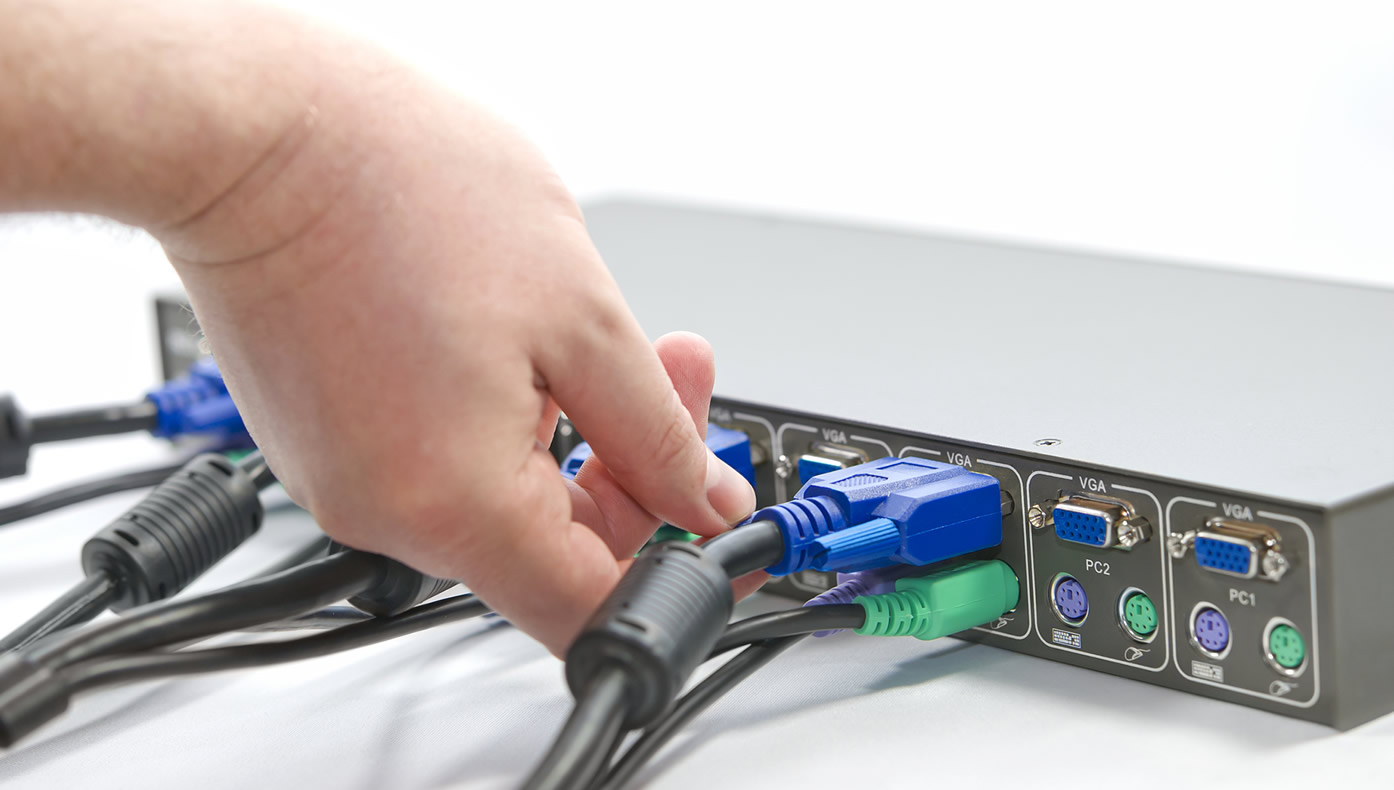What Is the Role of Networking Switches in Networking and Which Networking Switch Is Best Suited to Your Businesses?

Networking has become the bloodline for businesses no matter what is their nature and scope. Networking or computer networking refers to interconnected computing devices, known as nodes, that can be used for exchanging data and sharing resources with each other. There are multiple types of networking but LAN (Local Area Network) and WLAN (Wireless Local Area Network) are the most popular choice for businesses. Due to rapid communication, resource sharing (data, printers, scanners, software, and other IT hardware), centralization of data, easy file transfer, and increased productivity, Networking has become an integral part of every corporation. There are multiple hardware components of networking, notable among them are routers, modems, firewalls, and communication mediums like wires, Ethernet cables, fibre optics, and Wi-Fi to connect devices, but Networking switches are the most important among all of the networking hardware.
Table of Content
What Are Networking Switches:
Networking switches are used to connect devices within a network, which is generally a LAN. They are deployed for sharing and transferring data, enabling communication and sharing of resources within a computer network. The majority of networking switches work at OSI 2 (data link layer) and a few of them operate at OSI 3(network layer) as well. Networking switches, routers, and networking hubs can be used for connectivity, these are different and should be deployed in view of their peculiar characteristics.
Network switches can help network administers perform the following tasks, though some switches provide additional functionalities depending upon the manufacturer and software deployed:
- Configuration of settings for utilizing requisite duplex either half or full and determination of bandwidth;
- 2. The Quality of Service(QoS) level can be determined for specific ports;
- 3. MAC filtering can be enabled along with other access control features;
- 4. Switches are deployed for carrying out SNMP monitoring (Single Network Management Protocol) in order to collect information from all the connected devices so as to determine the health of links;
- 5. Port mirroring configuration can also be managed by Networking Switches.
Types of Networking Switches
Knowing the difference between networking switches can impact the speed and configuration of your network and ultimately it can lead to consequences for the overall productivity and efficiency of your workspace. Here are some important types of networking switches and their pros and cons:
1-KVM Switches:
In a server room where there can be thousands of servers. Should we buy a separate mouse, keyboard, and monitor (known as Console) for each server? that would be ridiculously expensive. Or if one needs to control or manage 2 or more PCs, what should he do? buy the console for each PC? KVM networking switches are born out of necessity to perform such multi-tasking or server maintenance and management in a cost-effective and space-saving manner. KVM is an abbreviation of Keyboard, Video(monitor) and Mouse. These are used to control, switch between, and manage multiple PCs and rack servers. KVM switch solution can provide multiple benefits:
- 1. Users can control multiple computers and servers simultaneously.
- 2. It ensures a cleaner and neater workspace, thus reducing clutter and making the workspace comfortable and productive;
- 3. KVM switches can save both space and money because they will be no need to invest in purchasing a separate mouse, keyboard, and monitor for every system;
- 4. They can provide peripheral support as well for example USB peripherals. Thus eliminating the need for separate USB ports;
- 5. They help increase the efficiency and manageability of servers.
- 6. There are multiple options for switching. It can be a push button on the KVM switch or hotkeys on the keyboard. OSD (On-Screen Display) program can also be used for switching between computers. That makes KVM switches user-friendly.

So if you are looking for networking switches for managing multiple connected devices in the network from a single console, you should go for KVM networking switches. These are generally recommended for home offices, smaller businesses, data centers, computer& server rooms, control, and manufacturing facilities. Their main disadvantage is the security of devices connected to the network and lack of control over traffic over the network. For these features, Managed Networking Switches are used.
2-Managed Switches:
This type of switch solution offers a comprehensive set of features to fully cater to the requirement of large organizations that have huge and growing LAN networks. As the name indicates, managed switches permit greater control over the traffic accessing the network. IT network administrators can thus prioritize the traffic for each connected device. Managed switches offer many advantages:
- These can be used to create Virtual LANs to further divide the network and prioritize the traffic flow for every connected device;
- Spinning Tree Protocol(STP) in their built-in design allows the network administrator to perform Quality of Services(QoS) tasks to measure the overall performance of the network and they can also access managed switches remotely as well to make any adjustment;
- The commands like Bandwidth Rate Limiting and Port Mirroring help users to achieve optimal data rate through tweaking the connected devices;
- Managed Switches can better support faster speed. In other words, they can fully back Gigabit Ethernet which is 100 times faster than traditional Fast Ethernet;
- These switches are equipped with Simple Network Management Protocol(SNMP) agents that help network administrators troubleshoot the network problems;
- They can also have the option of IP routing which makes them comparable to Routers;
- Their features like level of security, precision control, scalability, and flexibility have meant that they are the first choice for large corporations and organizations;
- Downside is the cost of managed switches. They are expensive as compared to their Unmanaged or Smart Switches counterparts.
3- Smart Networking Switches: :
Smart Networking Switches are generally considered the sub-category of managed switches. They are more sophisticated than Unmanaged Switches but offer less management, security, and segmentation capabilities as Managed Switches do. they do support VLAN but with fewer management options. They lack support for telnet access and don’t have Command-Line Interface(CLI). As a result, they cost less than fully managed switches. In short, Smart Networking Switches are best for deploying at the edge of large networks (while managed being installed in the core), for those networks which are fast and constant, and for smaller businesses that have limited budgets and don’t need the full functionality of the full Managed Switches.
4- Unmanaged Network Switches:
They are called unmanaged because they don’t need to be monitored or configured. They have fixed configurations and don’t provide customization. They are built as a plug-and-play. They start working immediately after they are plugged into the network. Unmanaged Switches can have built-in but unchangeable settings for features like Quality of Service(QoS). They rely upon auto-negotiation between Ethernet devices for communication and determine data rate automatically. If broad changes in settings are required, network administrators have to do this physically. The upside is that they are the least expensive switches among all the categories.
Hence, if you need a switch that can perform the basic functions of the network without customization, or in other words, you want a switch for home offices and smaller businesses, you should go for Unmanaged Network Switches. But their lack of important features required for running a large and complex network makes them unsuitable for big corporations and companies.
5- PoE Switches:
These switches PoE technology that helps them send both data and power to the connected devices in the network. PoE stands for Power Over Ethernet and it is fast emerging as a preferable choice for many businesses. The installation of these types of switches means that any connected device PC or IP camera would not need to be near an AC access point or router. The integration of power and data on some cables allows devices receive data in parallel to the power. PoE switches greatly facilitate the cabling process.
Some Facts about Morgan Ingland Ltd.
We provide all kinds of networking switch categories. Cost-effective supplying of KVM switches, managed switches, smart switches, Aruba Switches, and PoE switches has been the linchpin of our success and a source of trustful ties with our customers. Morgan Ingland Ltd. is ready to provide high-end switch solution designing tailored to the distinct needs of your business.